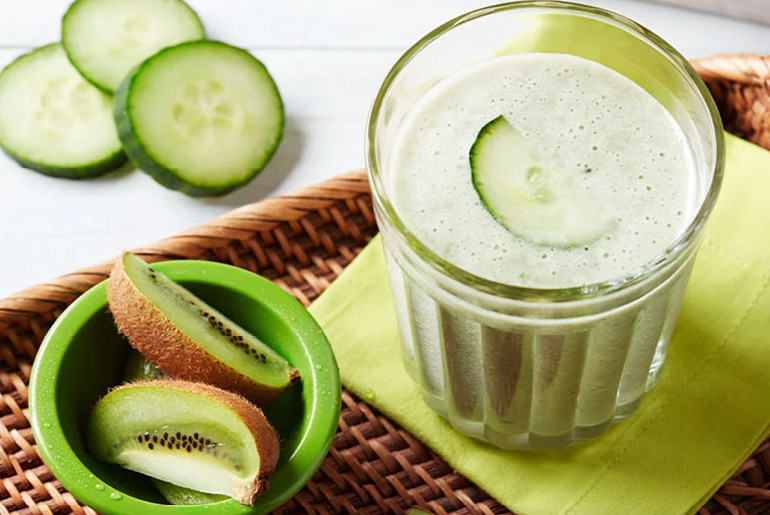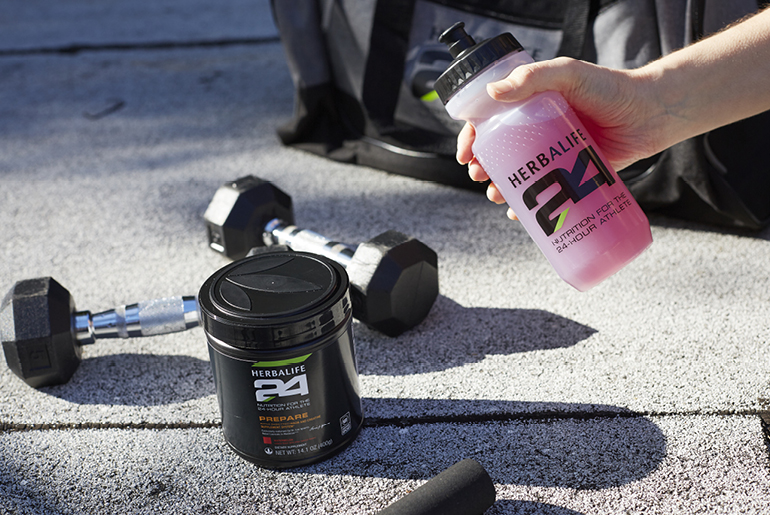Benefits of Protein Powder & How to Make a Nutritious Shake

Protein serves many vital functions in the body. In addition to being one of the building blocks of our hair, skin, nails, organs, and muscles, it also promotes muscle growth and helps control appetite. These days, plenty of protein supplements can help you reach your daily nutritional requirements: protein powders, ready-to-drink shakes, and protein bars. It is important to note that while these are convenient protein sources, these products are not meant to replace healthy protein-rich foods completely. Instead, they can be used to supplement your intake to help you meet your needs and goals.
What Does Protein Powder Do?
Protein powders are concentrated sources of protein and are produced from a variety of sources. Whey protein is made from dairy, while plant-based protein powders are usually made from soy or a blend of other proteins, such as rice, quinoa, pea, or flax seed.
Many of these products provide about 20-30 grams of protein per serving, and they’re commonly used to create shakes and smoothies, although they can be stirred into many other foods too. The powder format lets you control how much protein you want to mix into foods such as shakes, smoothies, oatmeal, yogurt, and soup.
What Are the Benefits of Protein Powder?
There’s plenty of research to support the benefits of protein supplementation:
- Protein can help support muscle strength and build muscle mass after resistance training. And when it comes to plant-based versus dairy protein supplementation, one study comparing vegan and omnivore athletes found both soy isolate protein and whey protein equally effective for muscle building.
- Protein supplementation has also been found to have a satiating effect, helping suppress appetite and control hunger. For this reason, protein powders can be incorporated into weight management plans within a reduced-calorie diet.
- In overweight and obese patients, protein supplementation resulted in significant reductions in body weight and total fat mass, according to one review.
- In older adults, protein supplementation has been shown to be an effective means to prevent and counteract sarcopenia or loss of muscle mass.
Whether your goal is weight loss, weight gain, or simply better health, consumers of all kinds can benefit from both plant-based and animal-based protein powders.
How To Use Protein Powder
While it’s important to include other sources of protein in your diet – such as fish, poultry, lean meats, and plant proteins, including beans, lentils, and tofu – protein powders are a convenient way to add protein to lots of foods. They can be added to cooked cereals, soups, and baked goods. When mixed as a shake, protein powder is an easy way to incorporate high-quality protein into your diet. In fact, many athletes and gym-goers use protein supplements for weight gain or post-workout recovery. Protein shakes can be used as a way to fuel before or to refuel after exercise.
How long does protein powder last?
Store your protein powder in a cool, dry part of your pantry to ensure it will stay fresh. With proper storage, protein powders can be stored for many months, but pay attention to any “use by” dates on the package.
How to Make a Shake: 7 Creative Ways to Customise Your Shake
In terms of how many scoops of protein powder to use, it’s important to read the instructions on the packaging.
Here are the basic steps on how to make a shake:
- Gather your ingredients and prepare your blender
- Add liquid as directed on the packaging
- Add protein powder as directed on the packaging
- Add 3-5 ice cubes
- Blend until smooth
- Pour and enjoy
Of course, to increase the nutritional value of your shake, consider adding other ingredients and adjusting it to your calorie requirements. Like starting with a blank canvas, you can customise your shake with all kinds of add-ins.
Here are just some of the ways:
- Fruits and Vegetables – Aside from the typical berries or bananas, try mixing it up with fruits like kiwi, pomegranate seeds, guava, or melon. Vegetables such as cooked carrots, pumpkin, beets, or butternut squash are great shake boosters because they’re mildly sweet and raw baby spinach make great shake add-ins.
- Beneficial Fats – Seeds like flax, hemp, chia, or sunflower add a bit of texture to your shake and give a little boost of minerals (especially copper and zinc) and omega-3 fatty acids. Nut butters – such as almond, walnut, or pistachio – also contribute zinc and copper, along with some protein and fibre, too. Avocado is another beneficial fat source that adds a great smooth texture to your shake.
- Additional Fibre – Rolled oats, chia seeds, flax seeds, apples, and berries help to boost your soluble fibre intake – that’s the type of fibre that traps water and swells, contributing to feelings of fullness.
- Spices and Herbs – Try a dash of sweet cinnamon, nutmeg, allspice, or clove, or add some spicy heat with ginger or even a dash of white pepper.
- Extracts and Zest – A little fresh lemon or orange zest adds a bright, fresh flavour to your shake, while extracts such as pure vanilla, almond, coconut, and peppermint add a flavour boost.
- Digestive Support – Yogurt contains probiotics – the “good” bacteria that help support digestive health. Ginger and peppermint are both known to aid the digestive process. Chia seeds are a very rich source of soluble fibre, which supports the growth of the good bacteria in your intestines.
- Extra Protein – Needs vary from person to person – age, gender, body size, and body composition all factor in. Protein powder may already be an ingredient in your shake, but adding extra protein allows you to include more protein and tailor the amount to your personal needs. Fat-free or low-fat dairy boosters like cottage cheese, ricotta cheese, or yogurt can be used to provide extra protein.





